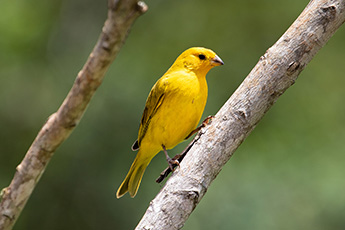Erik Larson’s nonfiction book “Isaac’s Storm: A Man, a Time, and the Deadliest Hurricane in History” details the events preceding the hurricane that killed 8K people in Galveston, Texas in 1900. Misunderstanding the severity of the storm, Isaac Monroe Cline, the chief meteorologist at the US Weather Bureau’s Galveston office, dismissed the suggestion for constructing a seawall around the city. By the time Cline came around to warnings from meteorologists weathering the storm in Cuba, it was too late to arrange mass evacuations. Thankfully, meteorology has made monumental advancements in the 124Ys, and when it comes to major storms, most people are inclined to err on the side of caution and heed the recommendations of meteorologists. As community financial institutions (CFIs) that engage in agricultural lending look at the year ahead, they too may want to take a cautious, more conservative approach to lending expectations.Lean Times Despite heightened credit needs among farmers, agricultural lending declined in 2023 and total lending is expected to remain down for the foreseeable future. Faced with higher expenses and slimmer profit margins — though the agricultural community’s need for financing remains strong — many farmers are going to great lengths to avoid borrowing at current interest rates. Instead, they are tapping the savings they built up over the past few years. When farmers do take loans, the amounts they are borrowing are lower. The overall volume of new non-real estate farm loans exceeding $1MM fell by roughly 50% in 2023 from the previous year, while smaller-sized loans declined roughly 15% during the same period, according to the Survey of Terms of Lending to Farmers. Even with an increase in the number of new loans, the amount that farmers borrowed was significantly lower overall. As a result, CFIs should expect a mixed bag when it comes to agricultural lending in 2024. With interest rates on agricultural loans at their highest average since 2007, according to the Kansas City Fed, farmers are expected to continue efforts to avoid any unnecessary borrowing. Despite the decline in loan values, however, CFIs have been the biggest beneficiary of the lending activity that has occurred. Though non-real estate agricultural lending declined for larger financial institutions, smaller financial institutions and CFIs saw a 25% increase in such loan activity in 2023. At the end of 2023, 69% of agricultural loans were held by CFIs, according to the Federal Deposit Insurance Corp. Fortunately for CFIs, defaults on agricultural loans remain below the 5Y-10Y average. Farmland prices have increased an estimated 12% YOY since 2022, the largest YoY increase in the last 18 years, but that doesn’t mean CFIs don’t have concerns.Areas To WatchAs CFIs look to the year ahead, they have a few concerns about the agriculture industry’s finances, according to the 2023 Agricultural Lender Survey conducted by the American Bankers Association and the Federal Agricultural Mortgage Corp, also known as Farmer Mac. The survey was completed by 260 agricultural lenders at institutions ranging from under $50MM in assets to upwards of $1B in assets. Here are some of the top concerns of lenders regarding the agriculture industry:
- Farm income levels. Due to waning export demand for commodities, the U.S. Department of Agriculture (USDA) projects a 25% decrease in net farm income for 2024. This signifies a forecasted fall to $116B from the 2022 record high of $185B. Though the projected decline is sharp, it would simply bring net farm income back to around the average for the past 20Ys, when adjusted for inflation.
- Liquidity. The USDA is expecting a decline in working capital for farmers, as income levels decline from their 2022 record high.
- Competition among lenders. Of the lenders surveyed, 72% ranked the Farm Credit System as their biggest competitor for loans in the agriculture industry, closely followed by community banks at 71%.
- Profitability. While roughly 75% of lenders expect that agricultural borrowers will remain profitable through 2024, 70% are bracing for profitability to decline.
- Credit quality. with expectations that they will return to historic levels. Consequently, roughly two-fifths of lenders heightened loan terms and underwriting standards in 2023.
Areas of particular concern for lenders include dairy and swine, while concern has significantly declined surrounding beef cattle and fruits and nuts. For now, farmers seem to be making things work with minimal lending.Faced with narrowing profit margins and high credit costs, there will come a point where lending will have to pick up and CFIs should keep a close watch on agricultural lending portfolios. In the meantime, CFIs should actively reach out to this customer segment to assess their needs and work to advise them in areas such as money management, both for their businesses as well as their personal needs. Keeping these relationships active is important, as the decline in lending is likely to spur competitors to become more aggressive in efforts to court new lending customers.




